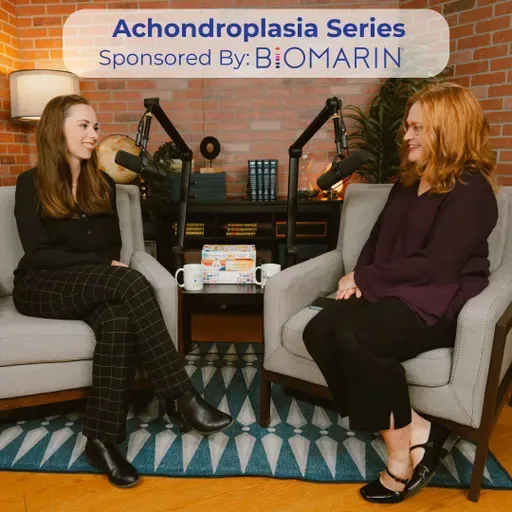
#359 Breaking Down Achondroplasia: A Pediatrician in Clinical Genetics Explains
DNA Today: A Genetics Podcast
What’s the most common form of skeletal dysplasia? Achondroplasia, and that’s exactly what we’re exploring in this podcast episode of DNA Today.
Joining us is Dr. Janet Legare, a leading expert in pediatric genetics and skeletal disorders. She serves as the director of both the Midwest Regional Bone Dysplasia Clinic and the Neuromotor Development Clinic at UW Health Kids. With a long-standing research and clinical focus on achondroplasia, Dr. Legare is here to walk us through the condition’s genetic cause, clinical presentation, and the importance of a multidisciplinary care model. We also discuss non-invasive prenatal screening (NIPS), psychosocial support, and the community’s role through organizations like Little People of America.
Key Takeaways:
Achondroplasia is caused by a gain-of-function variant in the FGFR3 gene, which causes impairment of endochondral bone growth.
80% of cases occur de novo in families without a history of skeletal dysplasia.
Multisystem complications beyond bone growth require coordinated care.
NIPS may detect achondroplasia earlier than ultrasound in some cases.
Tailored growth charts and tools like QoLISSY support tracking and quality of life.
Psychosocial and community support is crucial, especially early in life.
Misconceptions remain and genetic counseling plays a key role in correcting them.
Relevant Skeletal Dysplasia DNA Today Episodes:
#192 Osteogenesis Imperfecta with The Middle’s Atticus Shaffer
#301 Dwarfism with Colleen Gioffreda
#348: NIPT Beyond the Basics: Screening for Single-Gene Conditions (including skeletal dysplasia disorders)
Achondroplasia Resources:
Little People of America (LPA)
Dwarf Athletic Association of America (DAAA)
International Achondroplasia Forum
Achondroplasia GeneReviews
Ireland PJ, Johnson S, Donaghey S, Johnston L, McGill J, Zankl A, Ware RS, Pacey V, Ault J, Savarirayan R, Sillence D, Thompson E, Townshend S. Developmental milestones in infants and young Australasian children with achondroplasia. J Dev Behav Pediatr. 2010 Jan;31(1):41-7. doi: 10.1097/DBP.0b013e3181c72052. PMID: 20081435.
Julie Hoover-Fong, Charles I. Scott, Marilyn C. Jones, COMMITTEE ON GENETICS, Emily Chen, Tracy L. Trotter, Susan A. Berry, Leah W. Burke, Timothy A. Geleske, Rizwan Hamid, Robert J. Hopkin, Wendy J. Introne, Michael J. Lyons, Angela Scheuerle, Joan M. Stoler; Health Supervision for People With Achondroplasia. Pediatrics June 2020; 145 (6): e20201010. 10.1542/peds.2020-1010
Stay tuned... this episode is actually the first episode in a series about achondroplasia. In the next installment we will learn more about co-morbidities and multidisciplinary care. Then in the third episode will discuss currently available targeted therapy.
Get ready, genetic nerds—another brand-new episode of DNA Today drops this Friday! You can always count on us to deliver fresh content every Friday.
While you wait, why not dive into our library of over 350 episodes? Binge them all on Apple Podcasts, Spotify, our website, or wherever you love to listen—just search “DNA Today.”
Prefer watching? We’ve got you covered! For the past four years, we’ve been recording episodes with video, including some filmed at the iconic NBC Universal Stamford Studios. Check them out on our YouTube channel!
DNA Today is hosted and produced by Kira Dineen, MS, LCGC, CG(ASCP)CM . Our Video Lead is Amanda Andreoli. Our Social Media Lead is Kajal Patel. Our Outreach Intern is Liv Davidson. And our logo Graphic Designer is Ashlyn Enokian, MS, CGC.
See what else we are up to on Instagram, X (Twitter), BluSky, Threads, LinkedIn, Facebook, YouTube and our website, DNAToday.com. Questions/inquiries can be sent to info@DNAtoday.com.